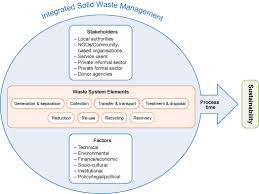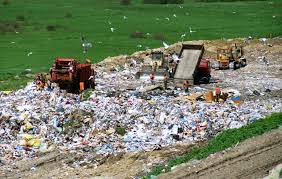These are operational rules that will no doubt be followed in carrying out effective solid waste management programmes or services. These principles include the:
– Principle of waste hierarchy.
– Principle of best available technology.
– Principle of proximity.
– Principle of self-sufficiency.
– Polluter pay principle and
– The extended producer responsibility principle.
Read Also : Proper Wastes Treatment and Disposal Methods
The Waste Management Hierarchy
Effective and efficient solid waste management is based on a hierarchy of management options: the reduction of waste, its reuse wherever possible, recycling, composting, energy recovery, and final disposal.
However, there will always be certain wastes for which incineration is the most reasonable environmental and economic option. The government policy shall seek to choose the best options for waste management that will minimize the risk of environmental pollution and harm to human health.
1. Principle of Best Available Technology (BAT)
This principle stipulates that disposal facilities must be equipped with the best available technology.
The best available technology is selected on technological, environmental and economic criteria. That is, a disposal technology that is most cost effective and ecofriendly should gain priority over others.
2. Principle of Proximity
The principle of proximity recommends that solid waste must be treated as close as possible to the place of production or collection. This will not only minimize cost of haulage but will reduce the risk of littering the transport routes through improved supervisory efficiency.

3. Principle of Self-Sufficiency
This principle is based on the theory that every member state, every community is responsible of its own waste.
Therefore development efforts should encourage the containment of the waste generated by the community or member state no matter the degree of complexity of such wastes. The case of waste export or shift of responsibility to other community or nation should not arise.
4. Polluter Pays Principle(PPP)
This principle holds that waste disposal facilities must not be paid by tax payers’ money, but by the polluter. That is, every generator of waste – individuals, communities or industries must be taxed according to the quantity and complexity of wastes contributed by them to the municipal waste stream entering a waste management facility.
Read Also : Proper Waste Recycling Process
Hence, the cost of waste management is not left in the hand of government as is the case may be but distribute rationally upon the producers.
This will not only ease the municipality the burden of cost but give them the chance to provide other services to the populace. Also the polluter pay principle encourages private investment in waste management infrastructure.
5. Extended Producer Responsibility Principle
This principle requires that producers of products or services accept a degree of responsibility for the wastes that result from the products/services they market, by reducing materials used in production, making repairable/recyclable goods, and/or reducing packaging.

